Yamaha’s Dolby Atmos Soundbar Brings Movie-Theater Sound to Your Home
Over the decades, TV setups have gone from one speaker (mono), to two (stereo), to five or seven (surround sound). Well, now Dolby Labs has decided the sky is the limit. Or, rather, the ceiling.
Welcome to Dolby Atmos, in which there can be up to 64 speakers in your theater — including speakers over your head.
Imagine how immersive and realistic movie sound becomes when you hear jet engines, raindrops, helicopter blades, flocks of birds, missiles, and superheroes flying over and behind you.
Meet Atmos
Already, 1,600 movie theaters nationwide are equipped with Dolby Atmos sound systems, and 400 recent or upcoming movies have been engineered with Atmos soundtracks: Guardians of the Galaxy, The Life of Pi, Everest, The Martian, and so on, plus the latest Star Trek, Hunger Games, Mad Max, Terminator, and Mission: Impossible sequels.
(A prominent Dolby Atmos logo appears before these movies start.)
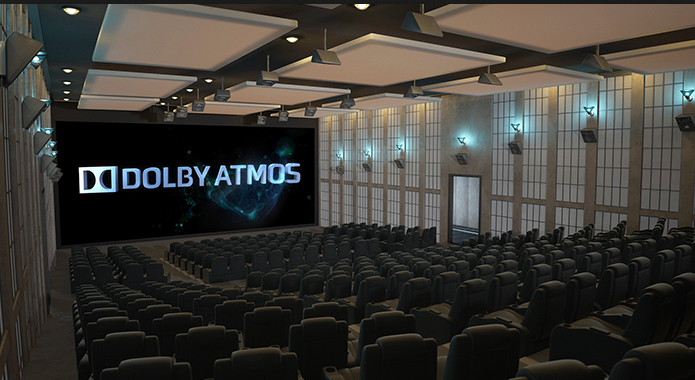
The great thing is that Atmos doesn’t require 64 speakers. Back when you had two, five, or seven speakers, movie sound engineers had to specify exactly which speakers should play each sound. But when they produce an Atmos movie, they specify where in space they want a sound to seem to come from — space being the “dome” of sound all around the audience — and the Atmos software does the rest, automatically distributing that sound to the appropriate speakers to create the effect. It’ll sound right whether you have five, seven, ten, 20, or 64 speakers.
It didn’t take long for movie buffs to wonder about getting Dolby Atmos at home. And you can — with a lot of expense and trouble, and the installation of overhead speakers (or speakers pointing up to bounce sound off the ceiling).
But do you want to hear something crazy? Yamaha claims to have put Dolby Atmos into a soundbar — the first and only Dolby Atmos soundbar. One speaker!

How on Earth is a single soundbar, placed in front of you, going to create a three-dimensional soundscape that produces sounds over, beside, and behind you?
I was desperately curious to find out.
Soundbar Setup
Soundbars have become insanely popular. They offer much better sound than the tinny speakers built into your flat TV, but without nearly the expense, clutter, and wiring you’d need to install surround-sound speakers.
Soundbar prices start very low (for crummy ones) and go way, way up. This new Yamaha Atmos soundbar, for example, costs a breath-catching $1,600. It had better be worth it, right?
It’s a great-looking, sleek, big soundbar. It weighs 25 pounds. It’s 3 ½ feet wide, 3.6 inches deep, and 8.4 inches tall. That’s super tall — tall enough that it will cover up the lower edge of your TV if it’s sitting on the same surface.
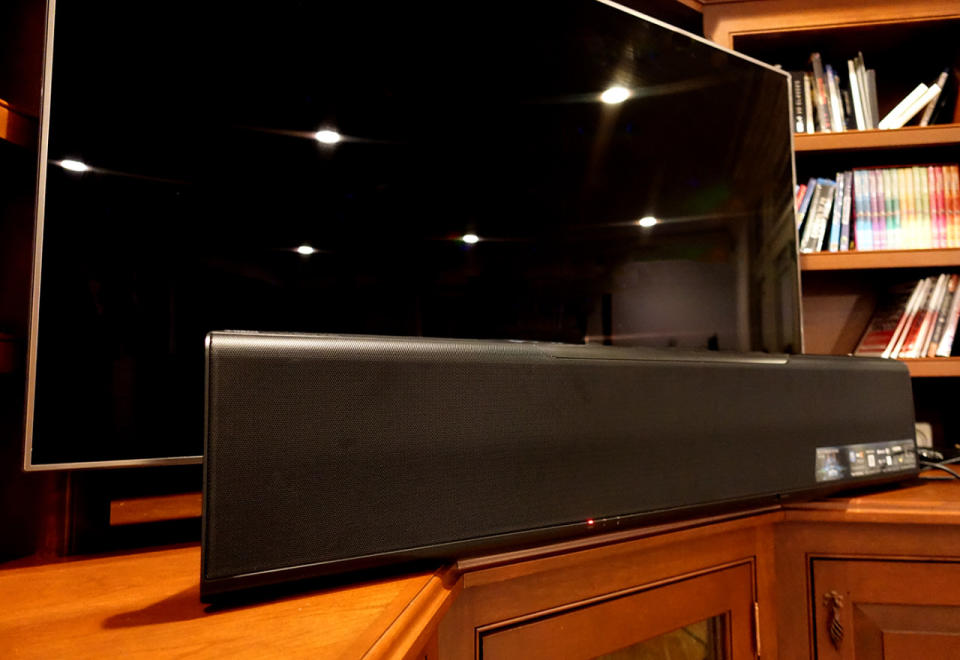
No solution is terrific. You can raise the TV. You can put the soundbar on a shelf below the TV. You can mount the soundbar on the wall (brackets are included). If your TV is in some kind of hutch or cabinet, maybe you can put the soundbar above the TV, with the understanding that you won’t get much Atmos atmosphere if there’s not much height above it.
The back panel offers every conceivable input (HDMI, optical, RCA) and output (HDMI) there is.
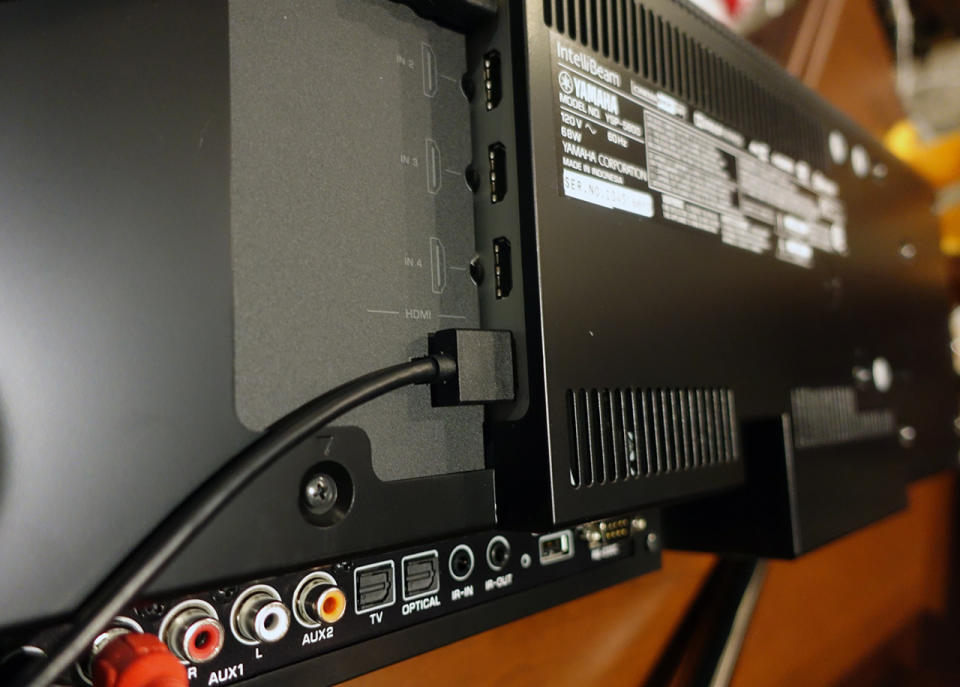
Meet the Yamaha YSP-5600
I sort of lied when I said that the Yamaha 5600 is one speaker. It is, in fact, 46 of them — with mathematically determined spacing, sizing, and positioning — inside a single cabinet.
And therein lies the secret of the Yamaha Atmos soundbar. Twelve of those speakers point diagonally upward. They bounce sound off your ceiling, with timing precisely engineered to simulate sound coming at you from above.
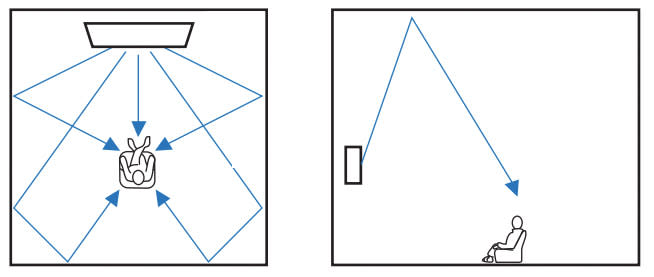
Side-pointing speakers do the same trick for the left and right channels. They bounce sound off your walls. Overall, the soundbar strives to re-create the soundscape of a seven-speaker surround-sound setup.
And how does it know exactly how to aim those ricocheting sound beams? As part of the setup, you connect an included microphone — yes, a microphone — to the front of the speaker and place it on a cardboard stand where you’ll be sitting, like this:
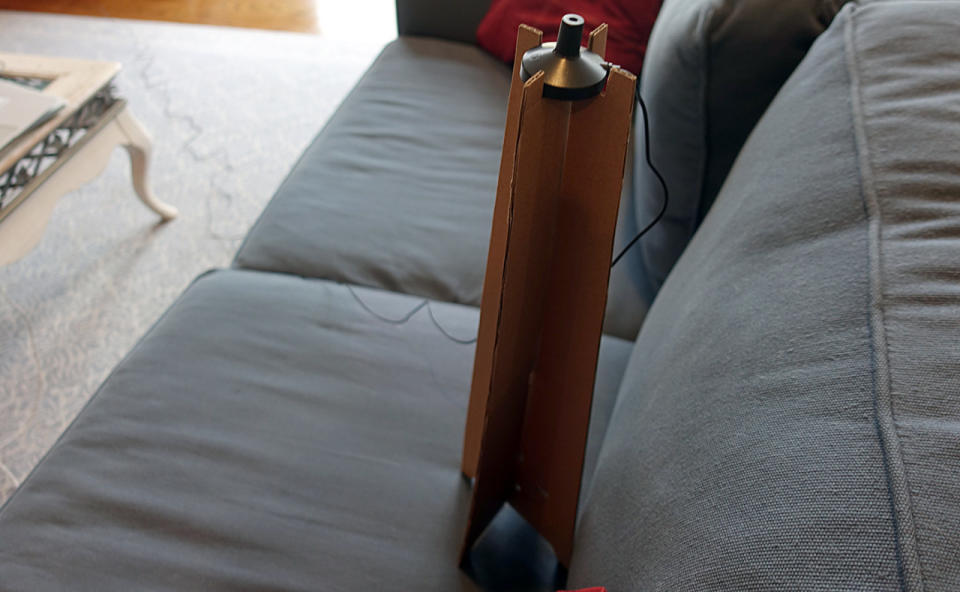
At that point, you use the excellently designed remote to start the Intellibeam process: The soundbar blasts three minutes of weird static, beeps, and boops into your room, and uses the microphone to model your room’s shape and dimensions. Very cool.

You can, if you wish, manually tweak the strength of the left, right, front, rear, and overhead signals. Those are just some of the quadrillion setting tweaks you can make to this machine — if you’re willing to view its menus on your TV. This process does expose you to the hideous typography.

To create the surround-sound effect, the soundbar takes advantage of psychoacoustics — how our ears and brains perceive sound. It makes tiny changes to volume, timing, and frequency to trick your brain into thinking certain sounds are coming from the left or the right side. (For example: A sound coming from the left side hits your left ear a fraction of a second before it hits the right one. Furthermore, it’s a little weakened and muffled by the time it hits the right ear, having been blocked by your head.)
A terse manual guides you through connecting your sound sources to the soundbar’s back-panel inputs — especially your Blu-ray player. Turns out that’s the only source of Atmos material. You can’t get it from Internet videos or live TV.
Dolby says that all recent Blu-ray players can already handle Atmos. On some, you have to dive into the menus and turn on “bit-stream out.” (On Sony players like my S350, you go into the Audio Settings menu, choose BD Audio, and change the setting from Mix to Direct.)
Of course, this is also a rockin’ good soundbar for any music source, including your phone (since it’s also a Bluetooth speaker and an AirPlay speaker for Apple gadgets). But the overhead effect kicks in only on Atmos-engineered Blu-ray movies.
(There’s a rival three-dimensional speaker technology called DTS:X. This soundbar will offer it soon, courtesy a software upgrade now being tested.)
How does it work?
The YSP-5600 sounds fantastic. I mean, for $1,600, it would have to, right? Yamaha also loaned me its NS-SW300 subwoofer ($550), which can connect to the soundbar either with a wire or wirelessly with a $150 adapter.
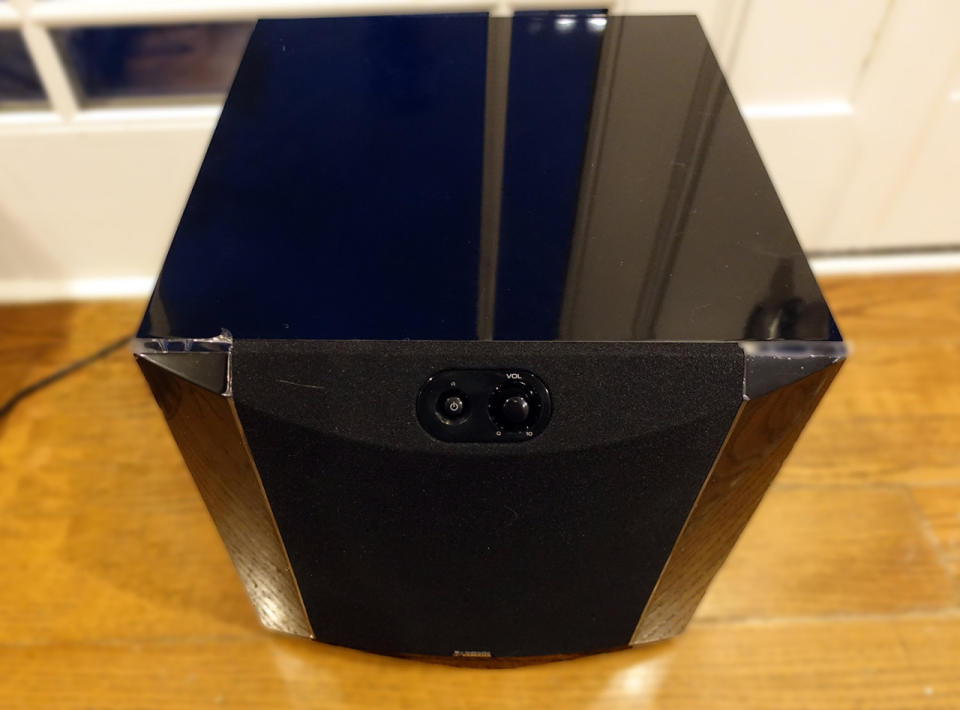
You cannot believe how close the two, in combination, come to re-creating the sound you’d get in a theater. I brought in various test audience members of various ages, and they universally exclaimed about the thundering clarity, power, depth, and realism of the sound. (Several blood relatives below voting age strongly suggested that I should buy this thing for the house.)
But what about the Atmos surround effect?
Well, it’s surprisingly good. Close your eyes, and you would swear that you can hear things going over your head or past your ears. In short, Yamaha’s trickery actually works.
Now, there are quite a number of footnotes to that statement:
The effect isn’t as good as having separate speakers around and above you. (The weakest simulated sounds are those that are supposed to come from behind you.)
The effect is really convincing when you’re sitting in the sweet spot — where you placed the microphone during setup — but rapidly loses effectiveness as you move farther away. The sweet spot is about one couch wide.
For this soundbar to do its psychoacoustic bouncing thing, you should, ideally, sit in a fully enclosed room: four walls and a ceiling. (A corner placement is OK.) Big furniture can disrupt the effect.
Your seat should be at least 6 feet away from the screen/soundbar, and can’t be against, or close to, the back wall; if it is, the rear sounds won’t be able to bounce into your head. That is, the YSP-5600 likes your couch to be in the middle of the room, which could be tricky for some houses.
Drapes, fabric, and other hangings on the wall ruin the effect, because they absorb the sound instead of bouncing it back to you.
In short, you want to avoid what the manual calls “Unrecommended Listening Environments.”
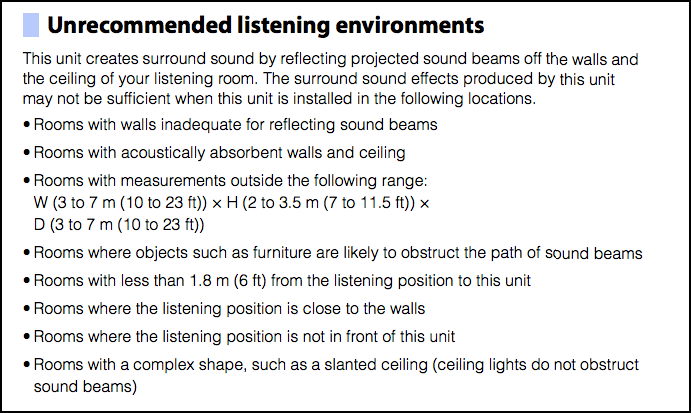
Prospects of the Atmos Soundbar
Three things stand between the YSP-5600 and total living room domination.
First, there’s the value proposition. With that fantastic subwoofer, you’re in for almost $2,200 — and for that money, you could get an ever better-sounding set of traditional surround-sound speakers.
Furthermore — don’t hurt me — Dolby Atmos at home isn’t a huge leap forward. How often, really, does a sound source go over your head in a movie? Frankly, it happens occasionally. Atmos does create a very cool, all-around-you sensation the rest of the time, but it’s not an earthshaking improvement over regular surround sound.
Second, there’s the height thing. Chances are good this soundbar won’t fit under the edge of your flat TV, as do most soundbars, so you have that problem to solve.
Finally, there’s the room-configuration problem. Lots of people have unrecommended listening environments; that takes the YSP-5600 out of the running.
That leaves the few and the proud: People with enough money and desire to give their TV setups a gigantic upgrade but who want to avoid the cabling and ugliness of five or seven speakers parked around the room. If you’re among them, get psyched: Yamaha has trained 46 speakers to perform a truly impressive psychoacoustic feat.
Now read these great Yahoo Tech stories:
Timex and Withings Watches Combine Fitness With Fashion — for Better and Worse
These Smart Light Bulbs Play Music, Boost Your Wi-Fi Signal, and More
David Pogue is the founder of Yahoo Tech; here’s how to get his columns by email. On the Web, he’s davidpogue.com. On Twitter, he’s @pogue. On email, he’s poguester@yahoo.com. He welcomes non-toxic comments in the Comments below.


